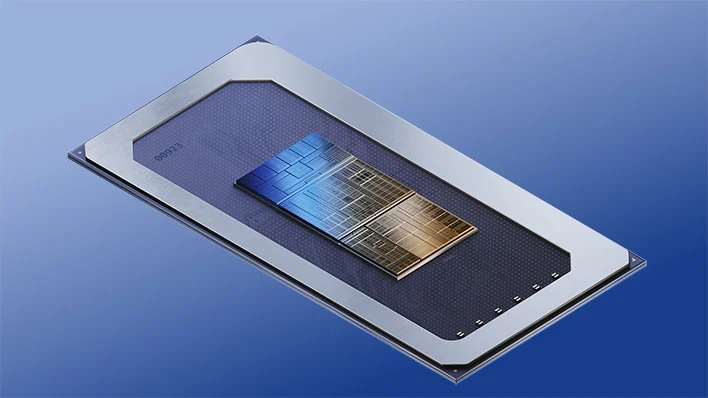Watch Meteor Lake's Arc iGPU Run Dying Light 2 Smoothly With XeSS

In a recent demo, Intel showed off its upcoming Meteor Lake CPU running Dying Light 2 on the chip's integrated Xe graphics. This demo compared how the game ran on the processor at a native 1080p resolution versus running the game at 720p with XeSS upscaling it to 1080p. Although the demo focused on how much higher the framerate was with XeSS enabled, it also gives us a hint as to what kind of performance we can expect from Meteor Lake's integrated graphics.
We don't know too much about Meteor Lake's graphics, but Intel has confirmed the specs of at least one of its graphics tiles, which will have up to eight Xe cores and ray tracing units. This puts the iGPU on par with the Arc A380 in terms of core count, though presumably the integrated graphics won't perform as well since it doesn't have dedicated memory and runs at a lower power. While the A380 has a TDP of 75 watts (and custom models can go higher), the Meteor Lake chip consumed only about 30 watts in the demo, and that's likely for the entire chip and not just the graphics.
Unfortunately, Intel didn't give any details on testing conditions, graphics quality, or even the actual framerate; the video only details that XeSS improved the framerate by roughly 60% or so. Furthermore, the video was uploaded at 1080p and 30 FPS, so it's hard to get a sense of what quality settings were used. It's also impossible to judge the framerate. At minimum though, it looks like the native 1080p resolution gameplay was running at roughly 30 FPS or more since it appeared about as smooth as the XeSS-enabled gameplay.
It's impossible to come to a conclusion on Meteor Lake's integrated graphics based on this video alone, but running a modern game at 1080p and 30+ FPS under 30 watts is certainly promising. That it's also being tapped for at least one upcoming handheld gaming PC is also a good sign of things to come with Meteor Lake, especially since Intel could theoretically make a bigger and better graphics tile down the line. That would certainly give AMD a run for its money, given the company still uses monolithic silicon instead of chiplets for its mainstream APUs.
We don't know too much about Meteor Lake's graphics, but Intel has confirmed the specs of at least one of its graphics tiles, which will have up to eight Xe cores and ray tracing units. This puts the iGPU on par with the Arc A380 in terms of core count, though presumably the integrated graphics won't perform as well since it doesn't have dedicated memory and runs at a lower power. While the A380 has a TDP of 75 watts (and custom models can go higher), the Meteor Lake chip consumed only about 30 watts in the demo, and that's likely for the entire chip and not just the graphics.
Unfortunately, Intel didn't give any details on testing conditions, graphics quality, or even the actual framerate; the video only details that XeSS improved the framerate by roughly 60% or so. Furthermore, the video was uploaded at 1080p and 30 FPS, so it's hard to get a sense of what quality settings were used. It's also impossible to judge the framerate. At minimum though, it looks like the native 1080p resolution gameplay was running at roughly 30 FPS or more since it appeared about as smooth as the XeSS-enabled gameplay.
It's impossible to come to a conclusion on Meteor Lake's integrated graphics based on this video alone, but running a modern game at 1080p and 30+ FPS under 30 watts is certainly promising. That it's also being tapped for at least one upcoming handheld gaming PC is also a good sign of things to come with Meteor Lake, especially since Intel could theoretically make a bigger and better graphics tile down the line. That would certainly give AMD a run for its money, given the company still uses monolithic silicon instead of chiplets for its mainstream APUs.

